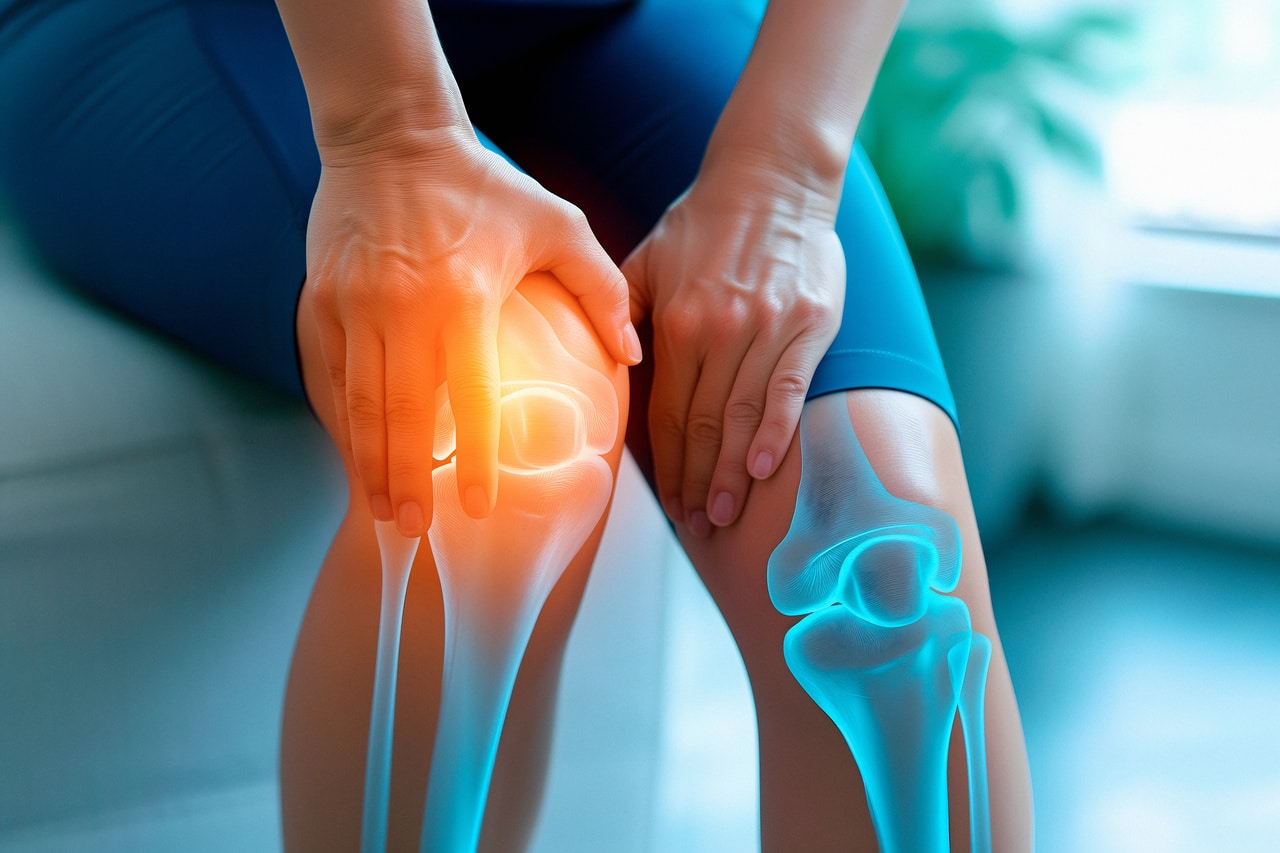Bursitis is a common condition that can cause significant pain and discomfort. It occurs when the bursae, small fluid-filled sacs that cushion bones, tendons, and muscles near joints, become inflamed. This inflammation can make everyday activities challenging and interfere with a person’s quality of life. Understanding the causes, symptoms, and treatment options for bursitis can help manage this condition effectively and improve overall well-being.
At NJ Spine & Orthopedic, we understand the impact bursitis can have on your life. Our team is dedicated to providing comprehensive care and support to help you manage and alleviate your symptoms. Whether you are experiencing bursitis in your shoulder, elbow, hip, or knee, our minimally invasive techniques and patient-centered approach ensure you receive the best possible care tailored to your needs.
What Causes Bursitis?
Bursitis can be triggered by several factors, including repetitive movements, prolonged pressure on a joint, or sudden injuries. Activities such as gardening, painting, playing sports, or even repetitive motions at work can lead to bursitis. The condition is also common among athletes and people with physically demanding jobs. In some cases, underlying conditions like rheumatoid arthritis, gout, or infections can contribute to bursitis.
Age is another significant factor. As we age, our tendons become less flexible and more prone to injury, increasing the risk of developing bursitis. Additionally, being overweight can place extra pressure on joints, leading to inflammation of the bursae. Preventative measures, such as maintaining a healthy weight and incorporating stretching exercises into your routine, can help reduce the risk of bursitis.
Understanding these causes is crucial in managing bursitis effectively. By identifying and modifying activities that may contribute to the condition, you can prevent flare-ups and reduce the severity of symptoms. For instance, taking breaks during repetitive tasks and using proper techniques can minimize joint stress.
Recognizing the Symptoms
The symptoms of bursitis can vary depending on the affected joint, but common signs include pain, swelling, and limited movement. Pain is usually localized and may feel sharp or achy, intensifying with movement or pressure. The affected area might also appear red and swollen, and you may experience tenderness when touching the area. In severe cases, the joint may become immobile, significantly impacting daily activities.
Diagnosing bursitis typically involves a physical examination and a review of your medical history. Your healthcare provider may also recommend imaging tests, such as X-rays or MRI scans, to rule out other conditions and confirm the diagnosis. Early diagnosis and treatment are essential to prevent complications and ensure a quicker recovery.
It’s important to note that while bursitis is common, its symptoms can mimic other conditions, such as tendonitis or arthritis. Therefore, seeking medical advice for an accurate diagnosis is crucial. Proper diagnosis ensures you receive appropriate treatment and avoid exacerbating the condition with incorrect interventions.
Effective Treatment Options
Managing bursitis often involves a combination of self-care measures, medications, and, in some cases, medical procedures. The first step in treating bursitis is to rest the affected joint and avoid activities that exacerbate the symptoms. Applying ice packs can help reduce swelling and alleviate pain. Over-the-counter pain relievers, such as ibuprofen or naproxen, can also provide relief.
Physical therapy is a highly effective treatment for bursitis. A physical therapist can design a tailored exercise program to strengthen muscles around the joint, improve flexibility, and reduce pressure on the bursae. Stretching exercises and range-of-motion activities can help maintain joint function and prevent stiffness.
In more severe cases, your doctor may recommend corticosteroid injections to reduce inflammation and pain. These injections provide quick relief but should be used sparingly due to potential side effects with long-term use. In rare cases where bursitis does not respond to conservative treatments, surgical intervention may be necessary to drain the inflamed bursa or remove it entirely.
Prevention and Lifestyle Adjustments
Preventing bursitis involves adopting healthy habits and making lifestyle adjustments to reduce joint stress. Regular exercise, particularly activities that enhance flexibility and strength, can help maintain joint health. Incorporating low-impact exercises, such as swimming or cycling, can provide cardiovascular benefits without putting undue strain on your joints.
Maintaining a healthy weight is also crucial in preventing bursitis. Excess weight can increase pressure on weight-bearing joints, such as the hips and knees, making them more susceptible to inflammation. A balanced diet rich in anti-inflammatory foods, such as fruits, vegetables, and omega-3 fatty acids, can also support joint health.
Ergonomic adjustments at work or home can further prevent bursitis. Using proper techniques when lifting heavy objects, taking breaks to stretch during repetitive activities, and ensuring your workspace is set up to minimize strain on your joints can all help reduce the risk of developing bursitis.
How Can NJ Spine & Orthopedic Help You?
At NJ Spine & Orthopedic, we are committed to helping patients manage and overcome bursitis. Our team of specialists utilizes the latest techniques and treatments to provide effective relief from bursitis symptoms. We offer a range of non-surgical and minimally invasive surgical options tailored to each patient’s unique needs.
Our concierge team is here to assist patients from across the nation, coordinating travel and accommodations to ensure a smooth and stress-free experience. With our patient-centered approach and state-of-the-art facilities, you can trust NJ Spine & Orthopedic to provide the care and support you need to regain your quality of life. Contact us today at (866) 553-0612 or visit our contact form.

